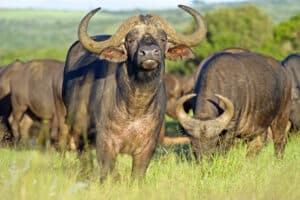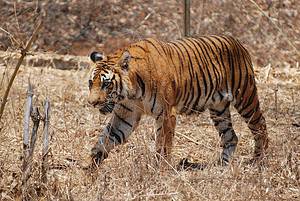Tigers are at the top of the food chain thanks to their size, strength, and speed. These regal apex predators are quick on their feet despite their hefty size. Tigers lay in wait and ambush their prey with incredible speed. So, just how fast are tigers? And how do they compare to the speed of other big cats?
Species Overview — Tigers
Tigers are majestic and powerful big cats that rule the animal kingdom. These apex predators are muscular creatures, with some species weighing up to 675 pounds. They are typically solitary creatures that hunt by stalking and ambushing their prey.
Tigers can easily take down other animals with their sharp claws and teeth. Each tiger tooth measures around four inches long! Unlike domestic cats, tigers also don’t mind getting wet. They are skilled swimmers, and water won’t keep them from pursuing prey.
Wild tigers live in Asia, typically in temperate or tropical climates. However, some species, like Siberian tigers, prefer colder climates and snow. Sadly, tigers are currently endangered, with some subspecies on the brink of extinction. Now, the world’s largest wild tiger population can be found in India.

Tigers are the largest among other wild cats and live for about 25 years.
©Thinker360/iStock / Getty Images Plus via Getty Images
Social Habits and Breeding
Tigers are typically solitary animals. They prefer to hunt and live alone once they have reached adulthood. On rare occasions, tigers gather to create a family or find resources. In these instances, a group of tigers is known as a “streak” or “ambush.”
Tigers are not monogamous and may have several mates over their lifetime. However, female tigers are extremely protective mothers. Newborn tiger cubs are wholly defenseless and rely on their mothers to stay alive. Tiger cubs remain with their mother until they can hunt independently at 18 to 24 years old. However, it may be two to three years before a young tiger reaches full independence.
How Fast Are Tigers?
Tigers are one of the most powerful creatures in the animal kingdom. A tiger is capable of reaching speeds of up to 40 miles per hour.
However, according to Medium, tigers can only run this fast for around 300 to 400 yards. Tigers are hefty animals, and running fast takes a lot of effort, meaning they can quickly get tired and overheat.
So, what makes tigers so quick? These creatures owe their speed to their powerful, dense muscles and flexible spines. Their sharp claws also help them grip the ground to propel them forward.
Can Humans Outrun Tigers?
Now that we know how fast tigers are, it’s clear that humans can’t outrun them in a sprint. The fastest speed a human has ever reached is about 27½ miles per hour.
According to the New York Times, sprinter Usain Bolt hit this pace briefly during his world-record 100-meter dash in 2009.
On the other hand, humans are some of the best endurance runners in the animal kingdom. Business Insider writes that our ability to run long distances is primarily thanks to our sweat and lack of fur.
Humans are capable of cooling themselves down while running through their sweat. In contrast, dogs and tigers use panting to cool down, which is far less effective.
Can Tigers Swim?
Another way tigers cool off is by submerging themselves in water. Tigers are strong swimmers thanks to their muscular bodies and partially webbed toes. According to Carolina Tiger Rescue, they have even been recorded to swim up to seven miles in a single day.
Tigers are ambush hunters, and water won’t stop them from catching their prey. Typically, tigers lie in weight while hunting, using their striped fur to blend in with their surroundings. When a tiger jumps, it can cover more than 30 feet in one leap and reach heights of over 16 feet.
Comparisons to Other Big Cats
Tigers are pretty quick but aren’t the fastest animals on earth. Now that we know how fast tigers are, how do they compare to the speed of other big cats in the wild?
Lion
Lions might be known as the “King of the Jungle,” but they aren’t the fastest big cats. Though these creatures are pretty quick, they can only reach top speeds of around 31 miles per hour.
However, unlike tigers, lions can sustain their pace for longer. While tigers are solitary hunters who prefer to ambush their prey, lions often hunt in groups called prides and can chase down a potential meal. They may also cooperate with other lions to surround and trap their prey.
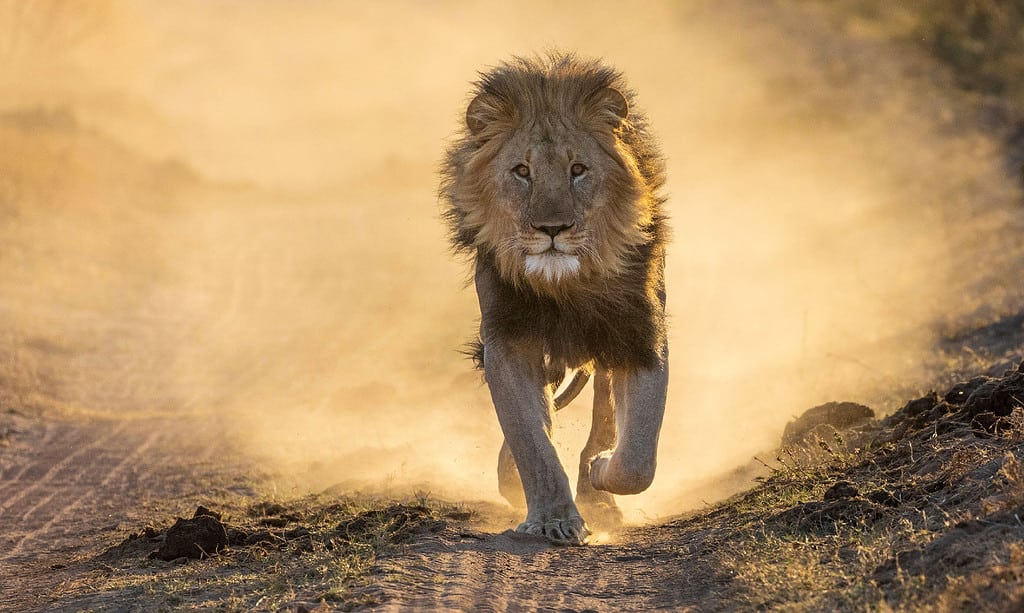
Male lions weigh between 330 to 570 pounds when fully grown, but some individuals exceed 600 pounds!
©iStock.com/Wirestock
Cougar
Cougars have various names, such as puma, mountain lion, catamount, or panther. These large mammals are technically not “true” big cats, but their impressive size and speed make them an exciting addition to this list.
Cougars are hefty animals, typically larger than both leopards and cheetahs. They make their home in the Americas and hunt prey like deer, elk, moose, and mountain goats. Despite their size, cougars are quick and can reach around 40-50 miles per hour.
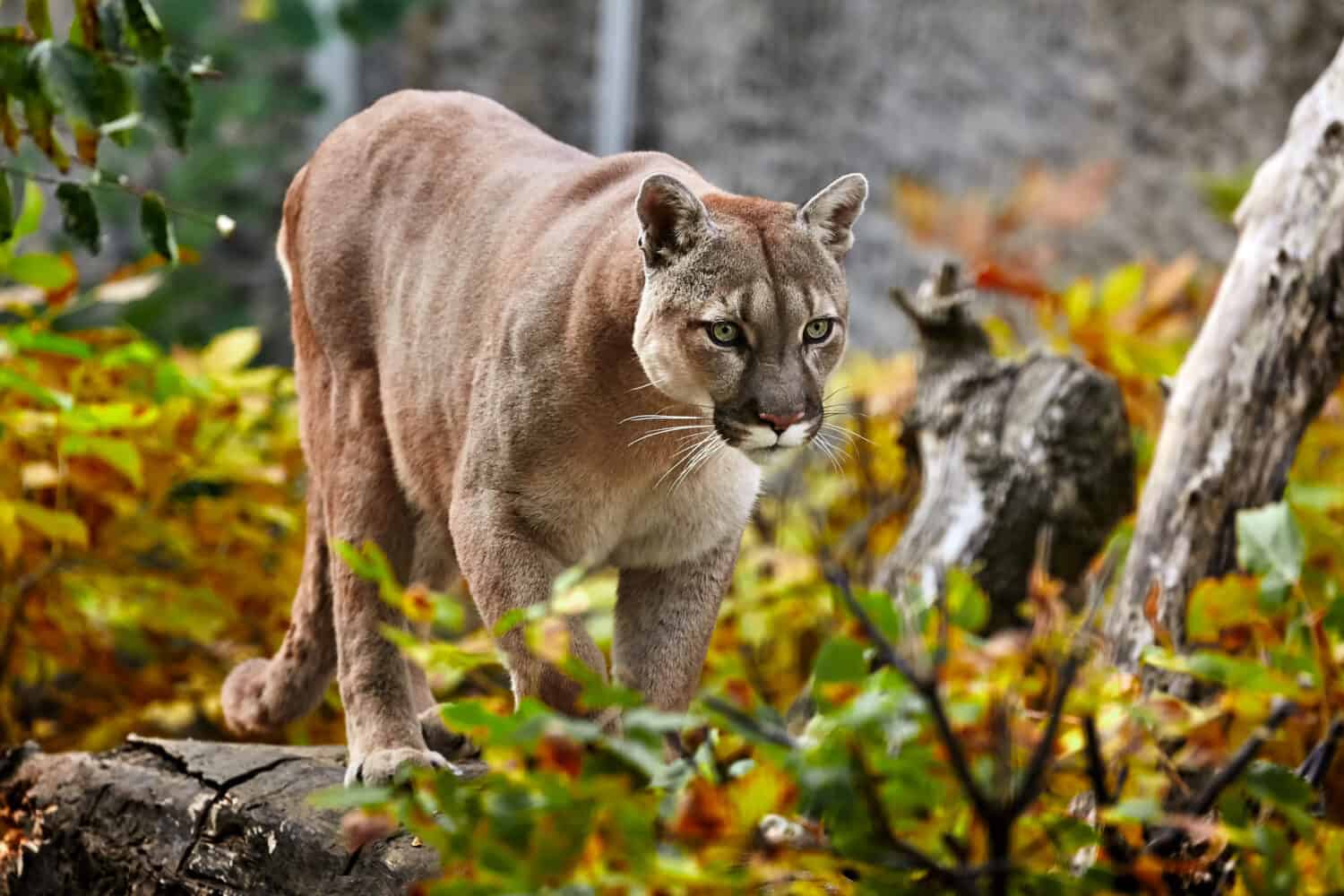
Cougars might not be actual “big cats,” but they are sizable creatures that can run around 40-50 miles per hour.
©Evgeniyqw/Shutterstock.com
Cheetah
If cheetahs are known for one thing, it’s their speed. Cheetahs are the fastest land mammals on earth, capable of reaching speeds of up to 70 miles per hour—the secret to a cheetah’s incredible speed lies in their small, lightweight, and aerodynamic bodies.
Cheetahs have an oversized, powerful heart, large lungs and nostrils, and an extra flexible spine, according to How Stuff Works. A cheetah’s tail even helps this creature to keep its balance during fast turns by acting as a kind of rudder and counterweight.

Cheetahs are the fastest land animals in the world, reaching up to 70 miles per hour.
©Kandfoto/iStock via Getty Images
Leopard
Leopards are cunning big cats capable of taking down fish, birds, warthogs, antelope, and more. These sleek creatures are not as hefty as lions, tigers, or jaguars. They typically only weigh up to 165 pounds for males—leopards hunt by stalking or ambushing their prey.
While leopards are quick, they aren’t as fast as tigers and can only reach 36 miles per hour. Leopards have one advantage in the animal kingdom — they are talented climbers! This skill is due to their muscular bodies and retractable claws. A leopard will often drag its prey up a tree to keep it away from other carnivores.
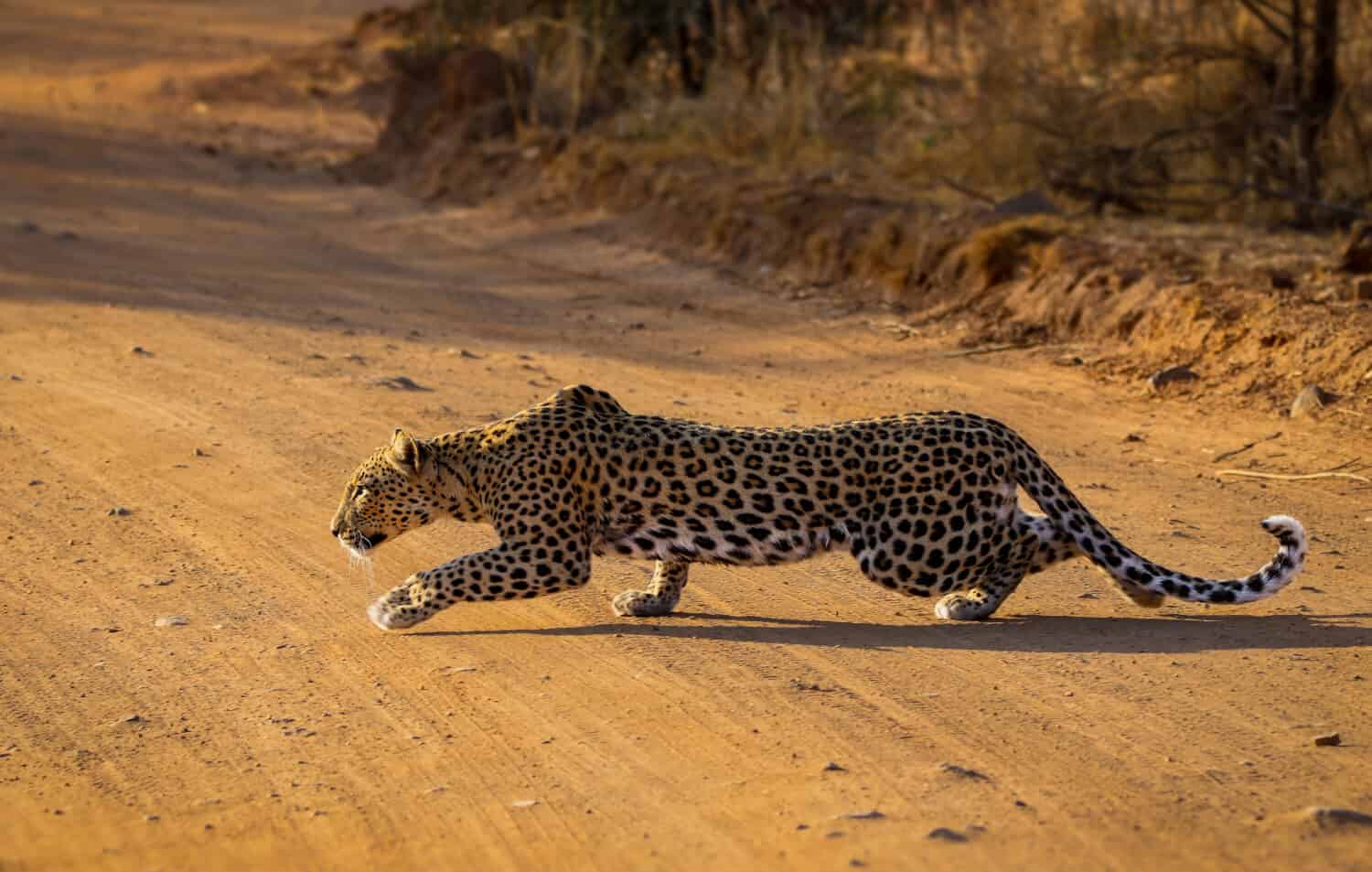
Leopards are cunning and quick animals that take down prey by stalking and ambushing.
©Heinrich Neumeyer/Shutterstock.com
Jaguar
Jaguars are big cats similar to leopards but with heavier and denser bodies. These creatures are typically yellowish tan with a black rosetta pattern.
Despite their stocky appearance, jaguars are quicker than leopards. They can reach up to 50 miles per hour in short bursts, making them the second fastest big cat in the world. Thanks to their powerful and quick bodies, jaguars are some of the most ferocious predators in the world. They can take down birds, fish, deer, capybara, and even caiman!

Jaguars are surprisingly fast despite their hefty size and dense muscles.
©Sergey Uryadnikov/Shutterstock.com
Summary of Big Cat Top Speeds
| Animal | Top Speed |
|---|---|
| Tiger | 40 mph |
| Lion | 31 mph |
| Cougar | 40-50 mph |
| Cheetah | 70 mph |
| Leopard | 36 mph |
| Jaguar | 50 mph |
The photo featured at the top of this post is © Michal Ninger/Shutterstock.com
Thank you for reading! Have some feedback for us? Contact the AZ Animals editorial team.




